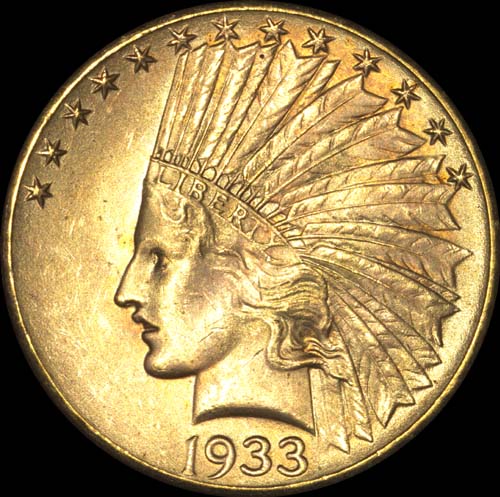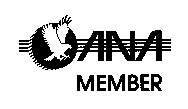By:
Marilyn Capawan
Keshequa Coins
Keshequa Coins announces the recently discovered Mohawk Valley Hoard of Bust Quarters and Halves.
The
beep of your metal detector means only one thing-you’ve
found….SOMETHING. Is it a pile of rusty nails from an abandoned
farmhouse? A piece of costume jewelry buried by children of long
ago playing “pirate”? Or, could it be genuine buried
treasure? When the find turns out to be a group of 6 silver
coins, and those turn out to be Bust Half Dollars that are Extremely
Fine to Almost Uncirculated, the buried treasure scenario seems a
possibility. And, as the saying goes, the possibilities are
endless!
The
story begins in the early 1990s, when two inveterate metal detectorists
in the vicinity of Albany, New York began hearing stories of ‘buried
treasure’ to be found on nearby lands. Not even a trace of
treasure, however, had ever been found. To make matters even more
challenging, the area containing the ‘treasure’, if it even actually
existed, hadn’t been pinpointed. It could be anywhere in the
Mohawk Valley around the cities of Schenectady and Albany---anywhere at
all. But knowledge of the environs and its history lent
credibility to the possibility of something important to be found in
its buried past.
The
Mohawk Valley covers territory stretching from Albany, New York
westward along the Erie Canal to the Syracuse area. Along its
path are Schenectady, Canajoharie, Utica, and Rome. At one time,
the valley represented the only westward path between the East Coast
and the Great Lakes and points west. It is an area rich with the
history of the early settlement of North America by European explorers
and immigrants. The Dutch landed on the tip of Manhattan and
migrated up the Hudson River to Albany, and began the fur trade with
the Native Americans. It was just a matter of time before
Manhattan would become the focal point of the New World. With
that, the path up the Hudson and westward through the Mohawk Valley
would become the major trading and development route well into the
1800s.
The
present day terrain in the valley is a mix of farm fields and land
which has been reforested. At the treasure hunters continued to
hear the as-yet unsubstantiated tales, they began to plot the locations
on topographical maps. Eventually, the search was ‘narrowed’ to
about a thousand acres. (note: a square mile is 640 acres) Then the
real and tedious work began, the most time consuming being obtaining
landowner permission to explore. Once that was secured, the
searchers, applying some logic by thinking like a person who would bury
treasure, began metal detecting in the wooded areas, especially those
characterized by landmarks—paths, stone walls, large trees, etc.
They reasoned that a person wouldn’t bury coins in the middle of an
empty field, as it would be too difficult to locate the spot in the
future. So, they concentrated their search to recognizable
spots. Even so, a thousand acres is a lot of territory to
cover! Given the area’s history, it wouldn’t be unusual to find
the odd Revolutionary War button, a cooking utensil, Civil War bullet
or an old well-worn copper coin. And, such discoveries were
made. But shortly before Easter 2002, things changed, and changed
dramatically.
When
the metal detector sounded this time, the leaves were cleared, and
among the loose limestone rocks there appeared a silver coin. At
first the gentlemen believed it might be a Spanish Reale. Upon
closer examination, they found it was a Bust Half Dollar. Along
with it were five additional halves. The hunt was on!
Immediately following this find, a few feet away, another cache was
found containing four 2 Reales, five Bust Halves and two Bust
Quarters. Not bad! Curiously, each coin was hallmarked—exhibiting
either a round or straight countermark or small mark as if made by a
tiny chisel or punch. Most were marked at about the one o’clock
position near the rim, some were marked near the center of the
coin. It brings to mind the countermarked E and L bust
quarters—except these were not letters, but plain marks. Their
placement, however, was consistent.
A
further search in the immediate vicinity yielded an additional 2 coins
on that first day of discovery. All coins were silver Bust
halves, Bust quarters or 2 Reales.
The
following day things became even more interesting. The metal
detector gave its strongest signal yet. Unfortunately, once the
ground cover was cleared away, a rusty bicycle chain was
revealed. But, in all thoroughness, our treasure hunter rescanned
the same spot of ground after removing the chain. Again, the
detector signaled. This time, the result was different.
Among the loose rocks, under just a couple of inches of soil, were
STACKS of Bust Half Dollars. In all, in this one ‘hole’ were 164
Bust Half Dollars and 1 Eight Reale. Because they were stacked,
and because they were in well -drained soil among loose rocks, the
coins for the most part are nearly as nice as the day they were
buried. Most are in grades of VF to choice AU. Again, all
were hallmarked.
The
searching continued daily for the next week and a half and each day at
least one additional cache was found. Most coins were Bust Halves
or 2 Reales. On Easter Sunday 2002, the detector went off once
again, heralding the discovery of approximately 100 Bust Quarters in
one spot. Looking closely at the land, it could be seen that the
quarters had been buried at the base of a large tree, long since fallen
and decayed back into the soil. Again, all the coins contained
the hallmark, with grades ranging from VG to AU. A similar
situation later in the year yielded a group of 50 2 Reales which had
been buried at the base of a tree which apparently died, fell over and
slid down the hillside. Some of the coins, having been tangled in
the roots, were dragged down the hillside with the tree. The
remainders were at what was once the tree’s base.
Overall,
there have been approximately 18 different caches totaling about 550
coins—which included about 100 2 Reales and one 8 Reale. The rest
were all Bust Quarters and Halves. All but two of the coins were
hallmarked. While the size and quality of the coins in this find
are unique in themselves, there are a number of other curious and
amazing facts: No higher denominations were found. No
copper was found. None of the coins was in any type of
container—all were stacked among loose rocks. The US coins ranged
in date from 1794 (half dollar) to 1838 (bust quarters and
halves). Besides the 1794 half, a number of rarities were among
the hoard. Included was one 1815/2 half (full luster AU58),
condition census bust quarters including one of the finest known 1805
Browning 5s, a 1818 B9 and an XF and AU 1818 B10—perfect reverse—an
extremely rare variety. One of the three non-hallmarked coins is
an 1817/3 half in AU58. The two Reales range farther back into
the 1700s and are generally in AG to Fine. A small group of the
reales and halves exhibited, in addition to the hallmarks, recognizable
countermarks from the period.
There
has been a great deal of research and educated speculation regarding
the well known E and L countermarks on Bust Quarters (some of which
were found in the Albany, NY area). We can now add an additional
mystery cache—with three different countermarks or hallmarks. The
Mohawk Valley was an area of relatively heavy commerce and travel in
the early 1800s. Were the coins buried treasure from river
pirates? Were they hidden by a local resident who marked them in
order to know if the caches had been found and spent? Were they
marked to indicate they were genuine? Our search of historical
documents from the Mohawk Valley has not yet yielded any clues.
Curiously, no Bust Dollars were found. Perhaps there are even
more coins in the farm fields, but located away from obvious
landmarks! Only time will tell.
Over
200 coins from this find have been acquired by Keshequa Coins of Nunda,
New York. In the interest of preserving and promoting numismatic
scholarship, we have made some of these coins available to the John
Reich Collector Society for census and documentation purposes. We
are also happy to make these coins available for sale to
collectors. Keshequa has chosen Numismatic Conservation Service
(NCS) to encapsulate the coins as genuine and have them identified with
the trademarked ‘Mohawk Valley Hoard’ name. Mike Capawan, owner
of Keshequa Coins, stated “the hoard represents a chance for the
average collector to own a highly-collectible example of a classic
historical coin, one with a ‘story’ (some of which is still a mystery),
at an affordable price.” As an added benefit to the collector,
encapsulation and identification by Keshequa and NCS of these coins as
Mohawk Valley Hoardtm pieces will prevent the very limited number of
hoard coins from being imitated, protecting the integrity of the
collector’s investment. Keshequa Coins proudly displays these
intriguing pieces of American history at coin shows nationwide.
Our show schedule, and photos of some of the coins, can be viewed at
www.keshequacoins.com. Interested parties may obtain a price
list by writing to Keshequa Coins at P. O. Box 253, Nunda, NY
14517 or emailing Keshequa at KeshequaCoins@frontiernet.net




